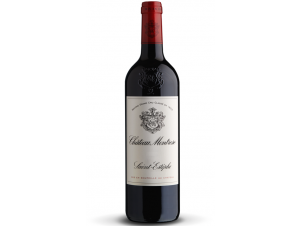You have no items in your shopping cart.
Wine Saint-Estèphe
The Saint-Estèphe appellation is located on the edge of the Gironde estuary, about 50 km north of Bordeaux and is part of the Médoc region. Its location between the sea and the estuary allows it to benefit from an exceptional microclimate. This vineyard, whose existence dates back to Roman times, is today a model of innovation. Read more on Saint-Estèphe
-
Top Selling-34%
-
Top Selling-30%
-
Top Selling
- -16%
- -20%
- -22%
- -20%
- -20%
- -13%
Appellation Saint-Estèphe
Saint-Estèphe is a historic appellation with five classified growths
It was around 300 BC that the wine culture appeared in the Médoc region. The prosperity of the vineyards of Saint-Estèphe is largely linked to the English merchants, in search of goodBordeaux wines, who came to the region in the Middle Ages to buy supplies. In the 17th century, the marshy lands were drained and dried out, which made it possible to further increase the cultivable areas. It was Henri IV who undertook this work in the marshes of the region, and he hired Dutch experts for this purpose.
But the vineyards of Saint-Estèphe really reached their peak in the 19th century, with the construction of large châteaux and extensive vineyards. Saint-Estèphe now has five crus classés in the 1855 classification. The appellation d'origine contrôlée was recognised by decree on 14 November 1936.
Saint-Estèphe has an ideal microclimate for vines
The appellation area stretches along the left bank of the Gironde estuary in a seven-kilometre long strip. Five hamlets define it: Marbuzet, Blanquet, Pez, Leyssac and Saint-Corbian. The vines are situated on a plateau overlooking the Gironde and adjoining Pauillac.
The soil is composed of clay gravel, and limestone. The sandy clay is mixed with gravel, pebbles and sand, the whole allowing a good drainage, the vine can thus take root in depth, sometimes up to five meters. The hillsides allow run-off water to flow towards the marshes and then towards the small streams that flow into the Gironde. The proximity of the estuary protects the plantations and ensures optimal annual thermal regulation for the vineyards.
With a surface area of 1230 hectares, they produce 59,000 hectolitres per year of red wine.
Saint-Estèphe produces red wines with an incisive character
The wines of Saint-Estèphe, close to the Pauillac appellation, nevertheless express a very different character. The blend is composed of cabernet, sauvignon and franc, carmenère, merlot, malbec and petit verdot. The robe is ruby, with purple and violet highlights. The nose opens with notes of red and black fruits, such as blackcurrant and redcurrant, then it develops floral flavours of violet, breeding, roasting, spices, liquorice, it is a very lively nose!
On the palate, the material is dense, with an incisive side, the tannins are fine, deep and melt into the material. The finish is very long. The keeping potential can reach up to 30 years, depending on the year. This red wine, which has an assertive character, is wonderful with very typical dishes such as game, and particularly game birds. It is recommended to serve it at 16°.
Three 1855 grand cru classifications within the Saint-Estèphe appellation
The Château Montrose
It was Etienne Théodore Dumoulin, whose father had bought the property from the de Ségur family in 1778, who cleared the hill on the property in 1815, and thus gave birth to the vineyard. In 1850, it covered 50 hectares. Five years later, the property's wine was classified 2nd great growth in the 1855 classification. The estate was bought by Mathieu Dollfus, in 1861, who further improved the vineyard's production tools.Then it became the property of the Charmolüe family in 1896 and finally it was bought by its current owners, Martin and Olivier Bouygues, in 2006. The estate now covers 95 hectares. Wine production is now in the hands of Jean-Bernard Delmas, who does everything possible to produce exceptional wines.
The Cos d'Estournel
In 1791, the Marquis d'Estournel inherited the family property. It is situated to the south of Saint-Estèphe. In 1830, he had the now famous cellars built, decorated with Chinese pagodas and a door from India. He maintained commercial relations with the Orient, and made some of his bottles benefit from a return trip to India, they were then called "Retour des Indes".Passionate about the culture of the vine, he put all his heart into it, all his possessions, and saw his work rewarded in 1855 by a position as 2nd grand cru. In debt, he had to sell his property in 1852 to a London banker. The estate is now in the hands of the industrialist Michel Reybier. It produces "Les Pagodes de Cos", a very great wine. But also, a "Cos d'Estournel white" since 2005.
The Château Calon-Ségur
Located in the northern part of the appellation, the estate covers 93 hectares and includes the vineyards of Capbern-Gasqueton. It was classified 3rd great growth in 1855. The word Ségur juxtaposed with Calon informs us that the estate belonged to the "Prince of vines", Nicolas-Alexandre de Ségur, who also owned Châteaux Lafite and Latour, and was so designated by King Louis XV. He is said to have said: "I make wine at Lafite and Latour, but my heart is in Calon".
Bordeaux appellations









































 TWIL - Achat de Vin
TWIL - Achat de Vin


